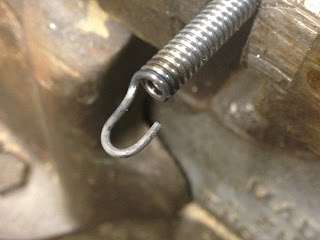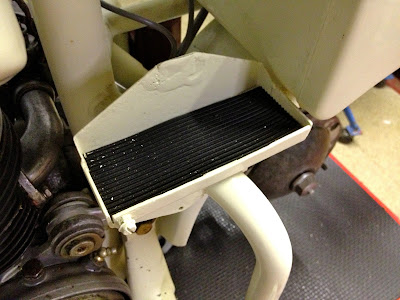How time flys. It’s ages since I last looked at this blog. A lot has happened in my life but not a lot on the scooter. I’ve been considering what to do about completing the project. A lot has been completed but there’s still some work to do to finish.
I still have to finally fit the side panels, the offside in particular needs work.
I have come to the conclusion that I am now too old to use the scooter even when it’s completed. It is therefore, with a sad heart, that I have decided to sell it. I’ve reached the age when I think it would be foolhardy for me to ride it. When I started out on this journey I was still feeling young and fit and was looking forward to reliving my youth. At 89 “youth” is a long time ago. Probably a dangerous place to explore.
Nothing happened. Despite my difficulty in finding my add it was clear that no one was beating a path to my door. I was saddened but not concerned as I was in no hurry, it could just sit there until I needed the space in the garage. Some time in September I, encouraged by my family reduced the price and included the lifting stand. Still no one pressing money into my hand. not to worry I still didn’t need the space in the garage. Then on the 20th November I received a notification from CCB from someone asking if the scooter was still available.
Joy, perhaps that garage space was finally going to be available after all. There ensued a series of questions through the CCB and emails regarding various details. I sent a couple of video clips via email. One was of the engine running in the garage and on other of me riding the scooter on the road. I couldn’t include video clips through CCB website, possibly because I hadn’t paid for the upgraded option. The videos and some photos of receipts for the rebuild of the engine were well received. I have to say the video of me riding the scooter only confirmed that It was time for. me to give up youthful activities. It showed just how difficult I found it to twist my wrist to engage third gear.
By the 24th November it was all over. My potential customer had decided that factoring the cost of collection from Plymouth and the work yet to be done it was more than they wanted to spend on a project. They were apparently experienced scooter owners and had made various trips to Europe. I can’t say I wasn’t disappointed, the lady I was dealing with seemed like a lovely person and was easy to communicate with. Perhaps it just goes to show my naivety in assuming things were going so well.
The garage space is still not urgent so the scooter can just sit there whilst I decide what to do next. It still has to go, eventually. I think I have two options:-
1. Reduce the price from £2700 to say £2500 and see if that produces any customers.
2. Advertise on Ebay. I think my family are more familiar with this and hopefully can guide me through trees.
Watch this space.



































